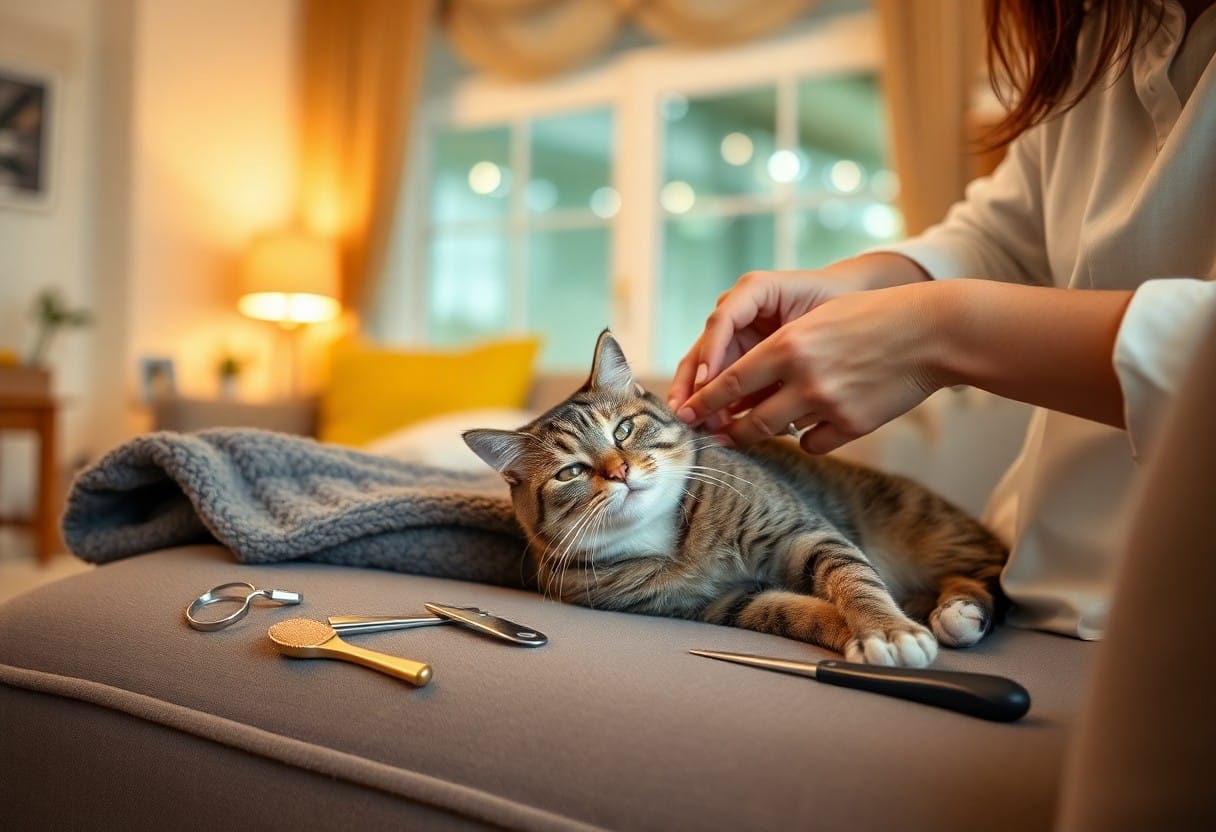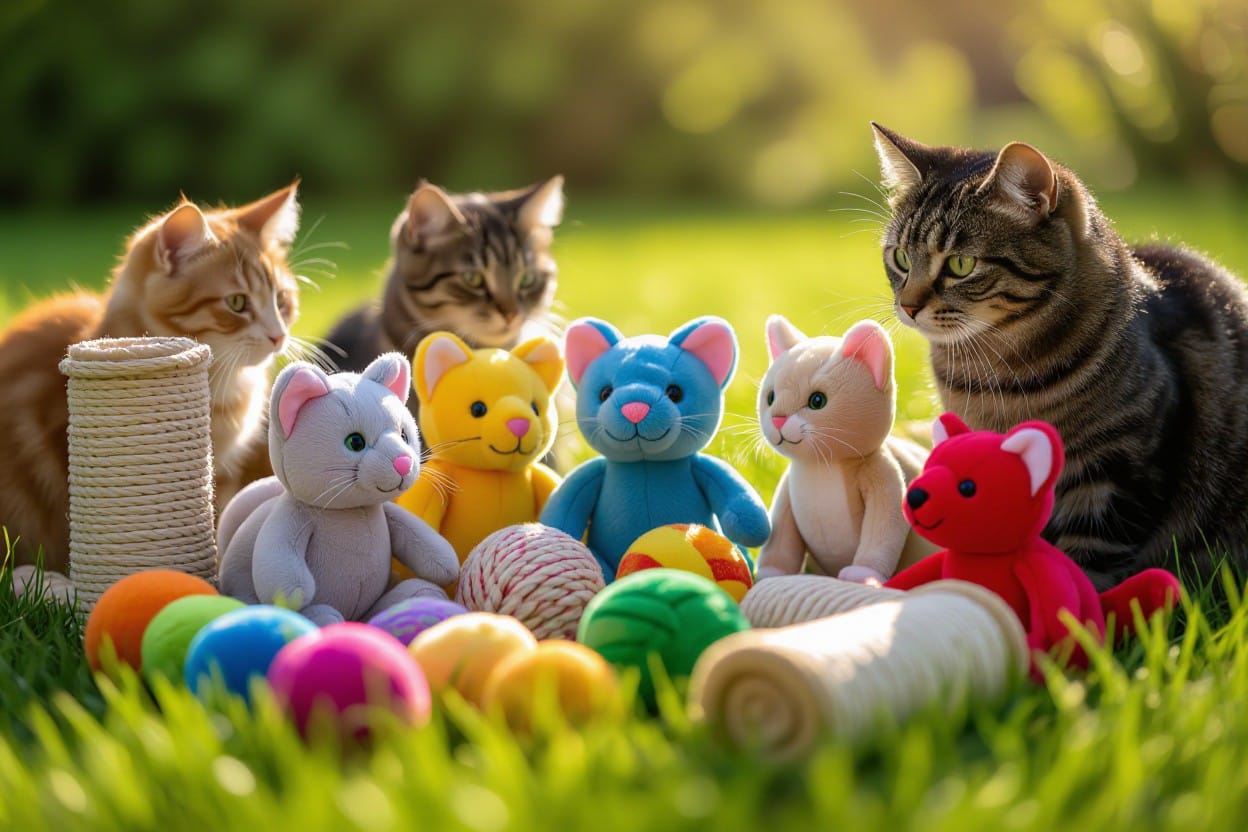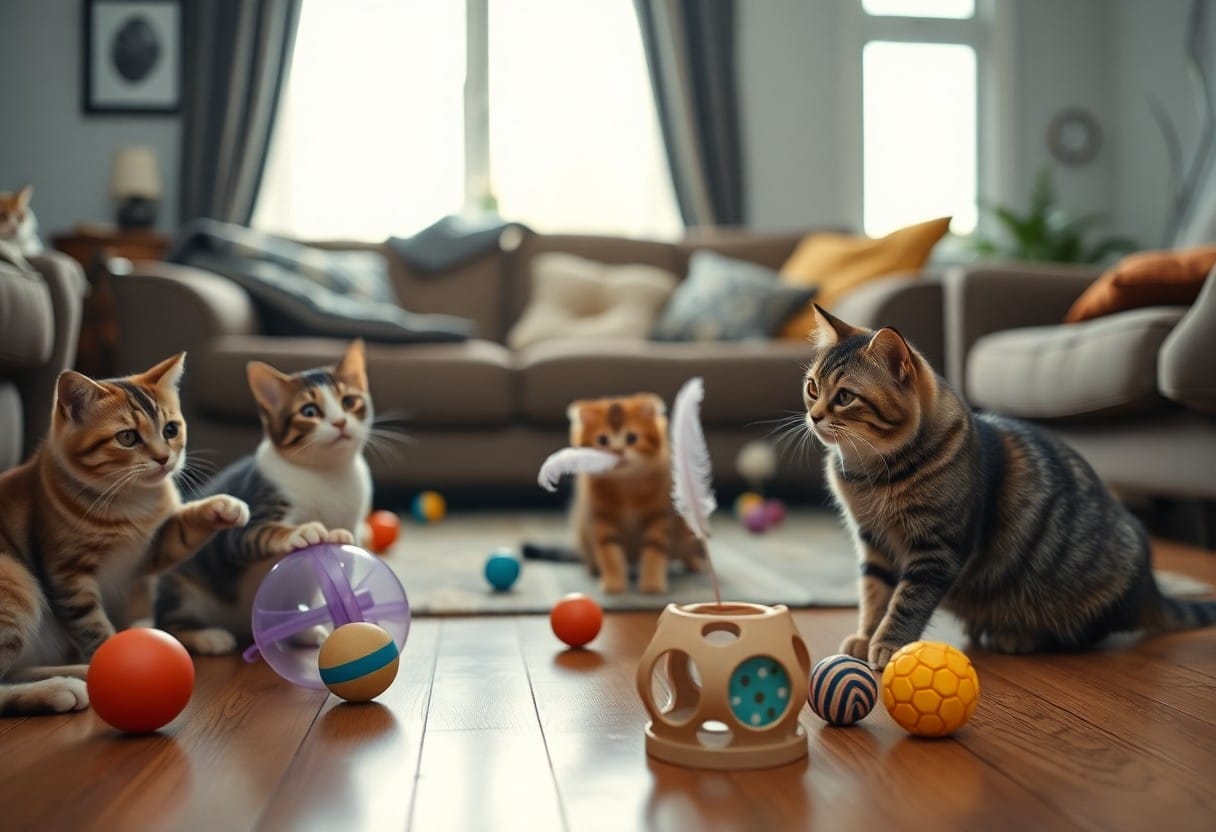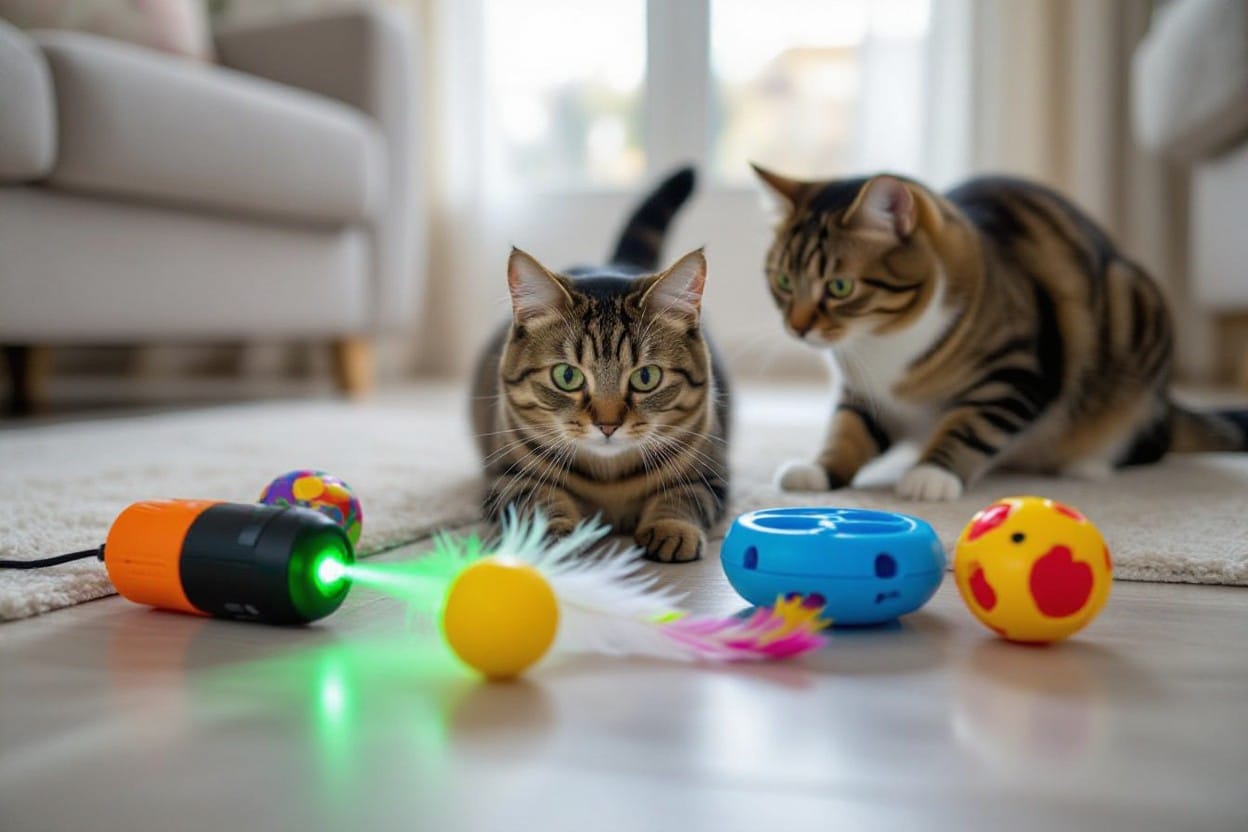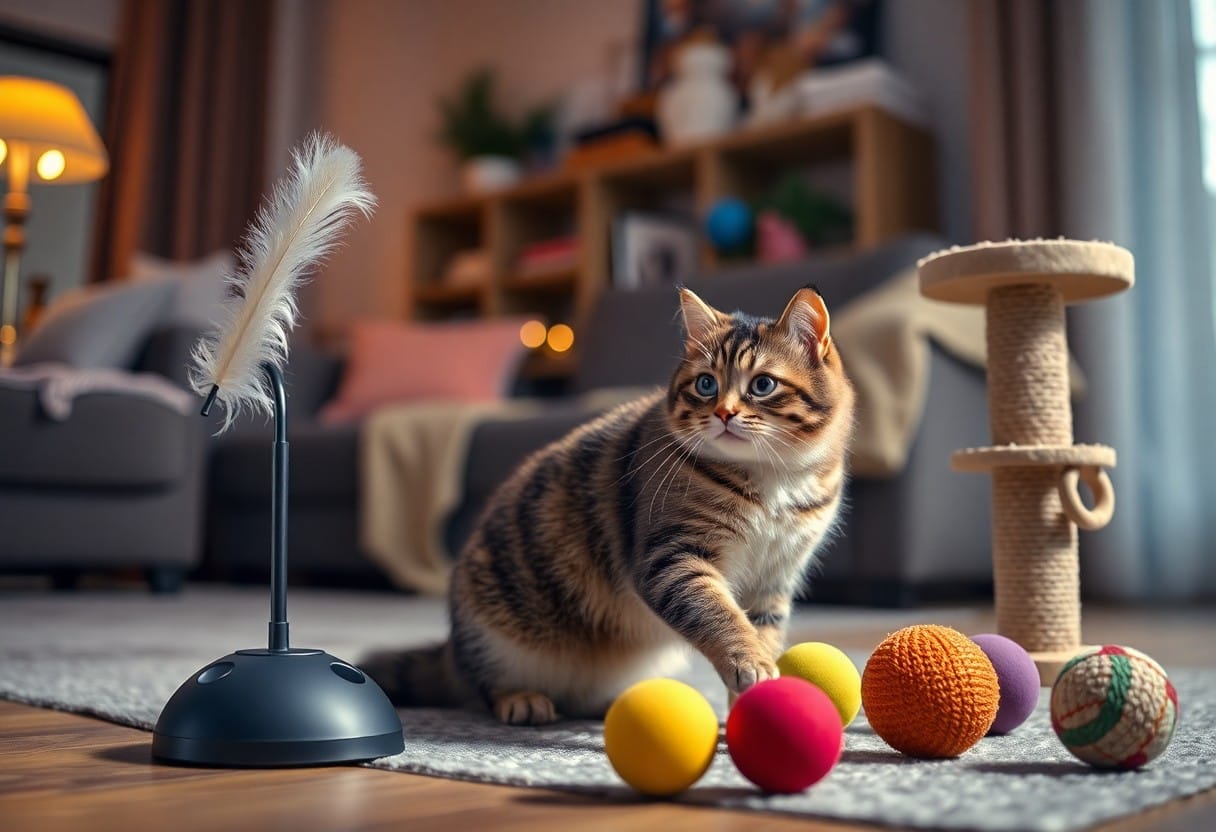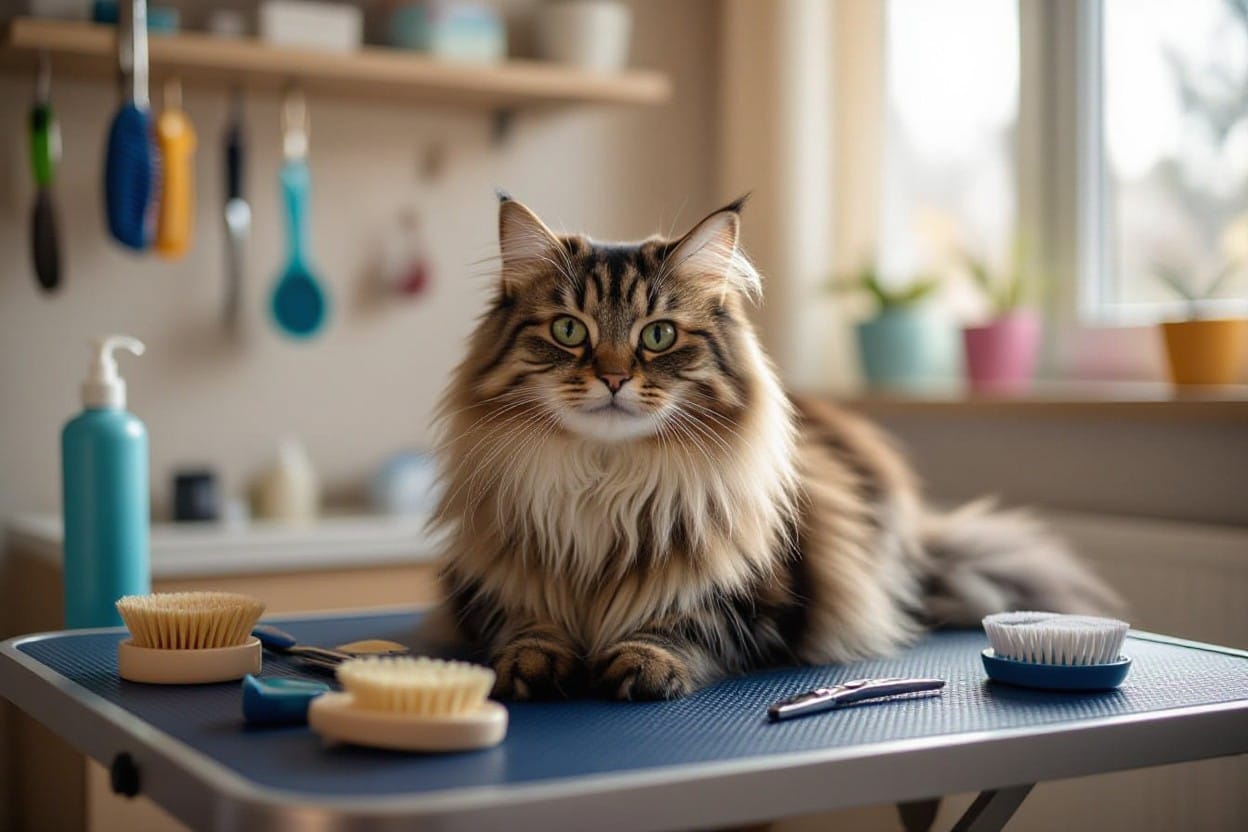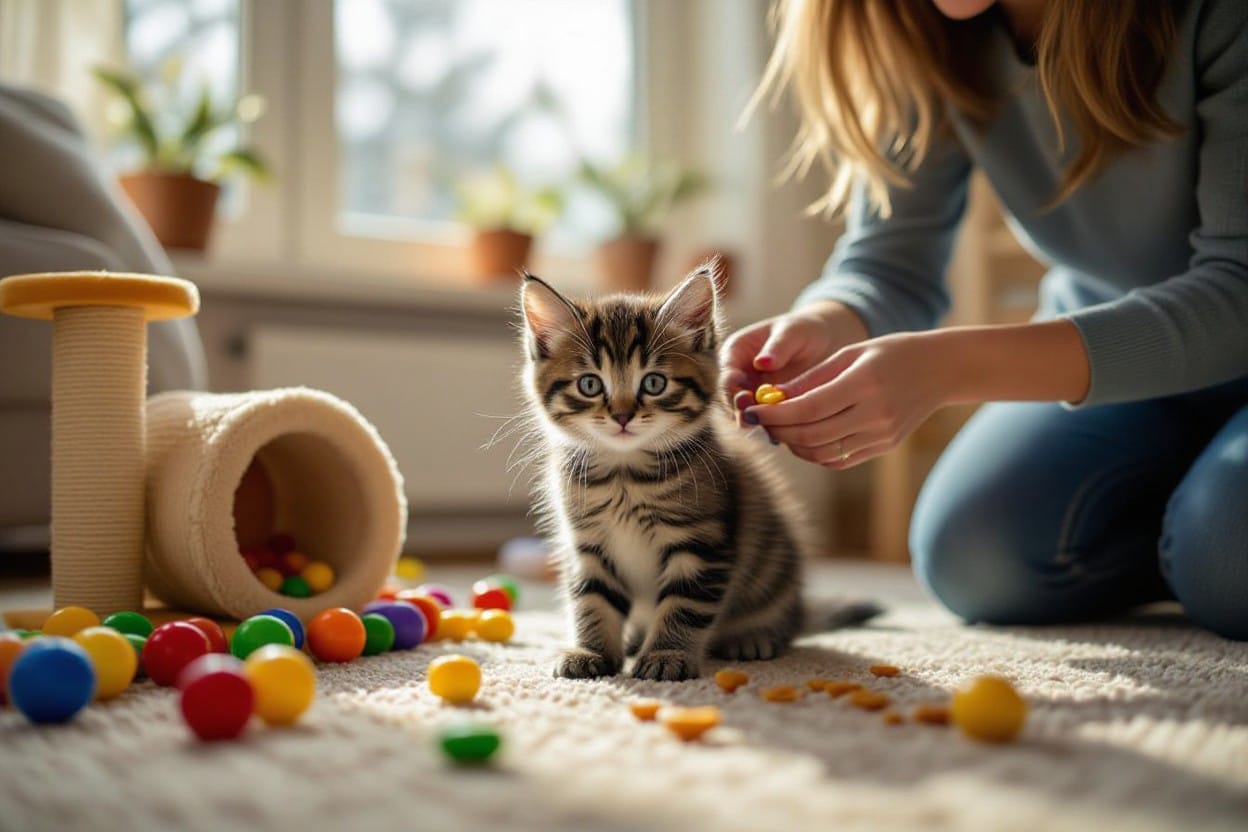Grooming your cat is not just about maintaining their physical health, but it can also be an excellent way to strengthen your relationship. By incorporating gentle brushing and playful interactions into your routine, you can turn this necessary task into a special bonding moment. Utilize positive reinforcement and keep sessions short to avoid overwhelming your feline friend. Learn how to make grooming an enjoyable experience for both you and your cat while addressing any potential grooming-related issues effectively.
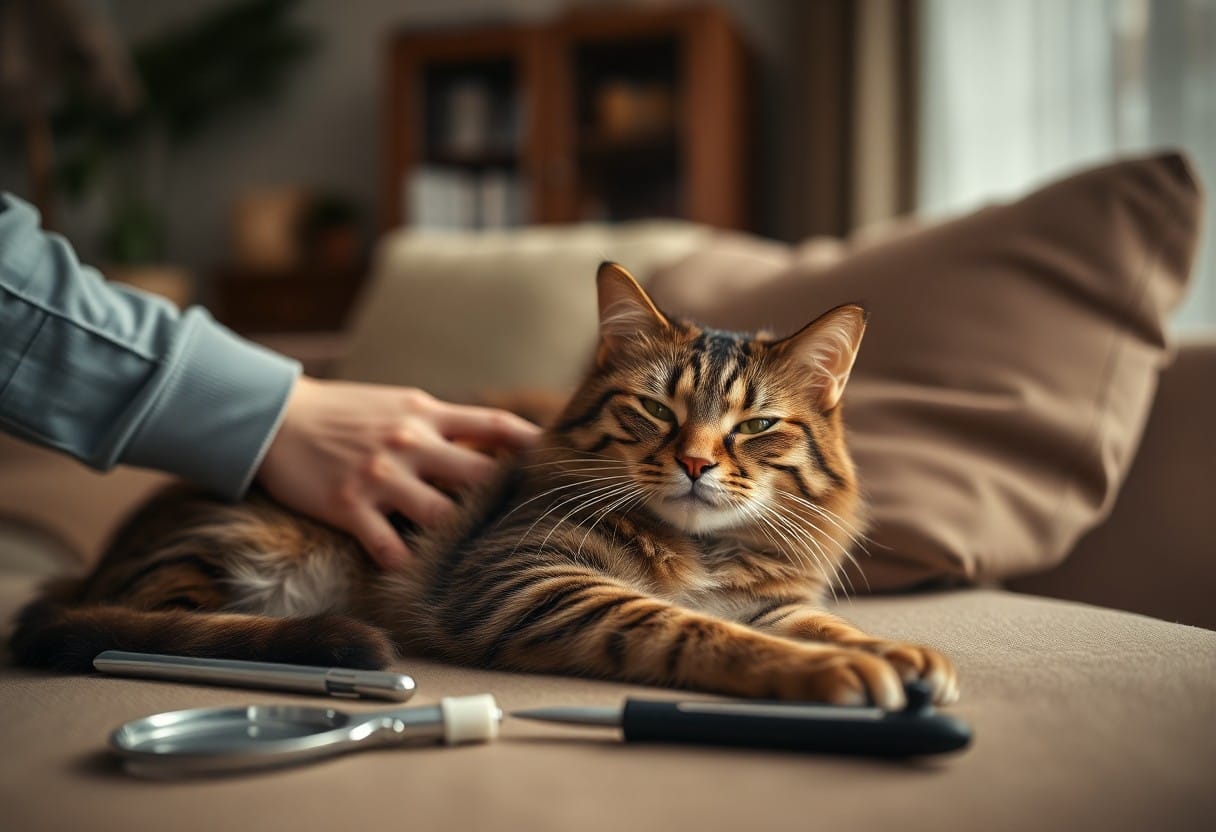
Key Takeaways:
- Incorporate play into grooming sessions to create a fun and engaging experience for your cat.
- Use soothing techniques and treats during grooming to build trust and strengthen the bond between you and your cat.
- Establish a consistent grooming routine that your cat can anticipate, fostering a sense of security and connection during this time together.
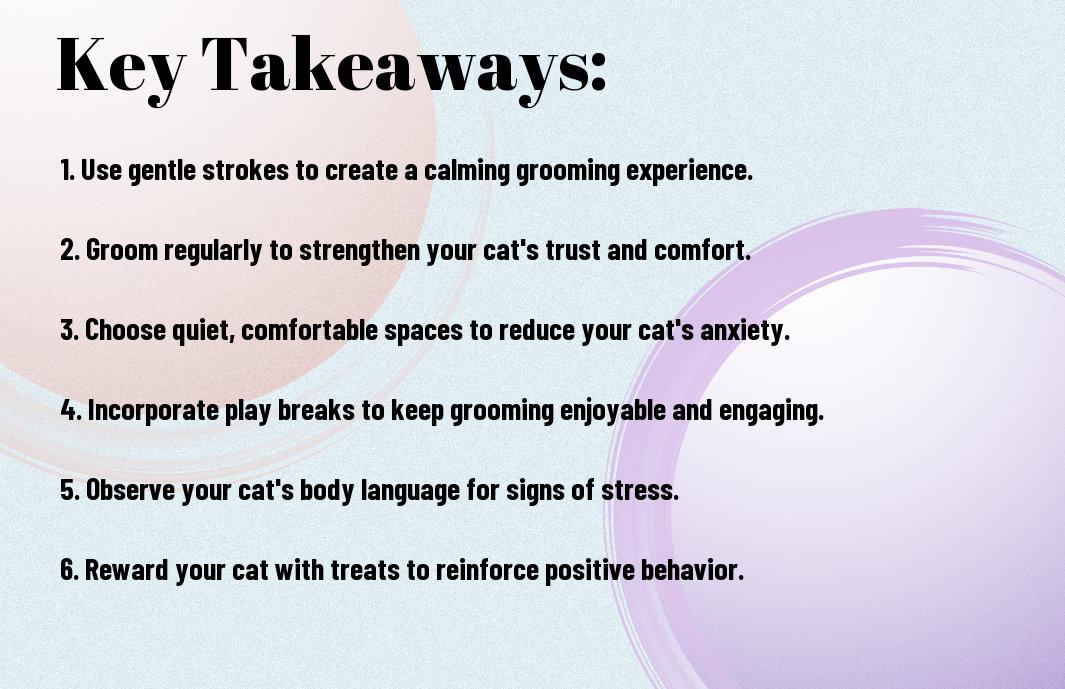
Understanding Your Cat’s Grooming Needs
While grooming may seem like a basic task, understanding your cat’s unique needs is important for their well-being. Different breeds have varying requirements, whether it’s the short-haired cat needing occasional brushing or the long-haired cat requiring daily attention to prevent matting. Pay attention to your cat’s specific coat type, skin condition, and lifestyle as these factors will help you tailor the grooming routine that keeps your feline friend happy and healthy.
Importance of Regular Grooming
Beside enhancing your cat’s appearance, regular grooming plays a key role in maintaining their health. It helps prevent issues like hairballs, matting, and skin infections, while also promoting better circulation. Additionally, grooming can be a great opportunity to check for lumps, bumps, or signs of illness, allowing you to catch any potential health concerns early on and ensure your cat lives a long, happy life.
Signs Your Cat Needs Grooming
Grooming can make a significant difference in your cat’s comfort and overall health. Look for the following signs: excessive shedding, visible mats or tangles, and increased grooming behavior by your cat. Additionally, if you notice your cat scratching excessively or developing a bad odor, it’s time to address grooming. Regularly monitoring these signs can lead to a more manageable grooming schedule tailored to your cat’s needs.
Needs for grooming can manifest in a variety of ways; be vigilant about observing your cat’s behavior. If you see clumps of fur collecting in corners or on furniture, it’s an indication of excessive shedding that requires your attention. Be mindful of matted fur, especially in sensitive areas like under the armpits or behind the ears, as these can lead to discomfort and even skin infections. Moreover, when your cat displays signs of excessive grooming, it could be a signal that they’re trying to resolve a discomfort. Addressing these signs promptly will contribute to both their physical health and emotional well-being.
Creating a Comfortable Grooming Environment
Some cats can be sensitive to grooming, so creating a comfortable environment is key to a positive experience. Ensure the area is quiet and free from distractions, allowing your feline friend to feel secure. Soft lighting and a non-slippery surface will help your cat settle in, making it easier for you to bond during grooming sessions.
Ideal Grooming Space
Among the best spots for grooming your cat are calm, familiar areas where they usually feel at ease. Consider a place like your living room or a cozy corner with a comfortable blanket. This will make your cat more receptive to the grooming process, enhancing both comfort and trust.
Tools and Products for Effective Grooming
An array of grooming tools can significantly improve your sessions. Invest in a high-quality brush suitable for your cat’s coat type, which can help minimize shedding and matting. Claw clippers are also necessary, so you can maintain your cat’s nails without causing discomfort. Additionally, choose grooming wipes or shampoos designed for felines, ensuring safe and effective cleaning.
Products like de-shedding tools and cat-friendly shampoos work wonders in achieving a sleek coat. Opt for grooming gloves that can both brush and pamper your cat, making the process more enjoyable. Always check for non-toxic ingredients in grooming products to avoid skin irritation, ensuring your cat’s safety and comfort. The right tools will not only make grooming easier but also enhance the bonding experience between you and your pet.
Techniques for Stress-Free Grooming
Unlike the chaotic scenes often portrayed in movies, grooming your cat can be a stress-free experience with the right techniques. Establishing a calm and positive environment is vital, as it helps your cat feel more relaxed. Use soothing voices and gentle movements to create an atmosphere of trust. Incorporating short, enjoyable grooming sessions will help you gradually build your cat’s tolerance and enjoyment of grooming time.
Gentle Handling and Approach
Around your feline friend, be sure to use gentle handling and a slow approach. Cats are sensitive creatures, and sudden movements or loud sounds can easily frighten them. Focus on getting your cat comfortable with your presence first, using pets and soft whispers before introducing any grooming equipment.
Gradual Introduction to Grooming Tools
Grooming tools can be intimidating for your cat, so gradual introduction is key. Start with the bristle brush, letting your cat sniff and explore it before you begin brushing. Once your cat seems comfortable, use the tool gently in short sessions. Offering treats during and after grooming helps associate the experience with positive reinforcement. This process builds trust and makes grooming a less daunting task for both you and your cat.
Introduction to grooming tools should focus on reducing any fear or anxiety your cat may have. Use non-threatening tools and allow them to become familiar with each item separately. Start by letting your cat investigate the brush and comb without applying them to their fur. You can place the grooming tool near their bed or favorite area, creating a sense of safety. Once they are comfortable with the tools, proceed with gentle brushing techniques. This ensures that grooming becomes associated with calmness and security, thus enhancing your bonding time.
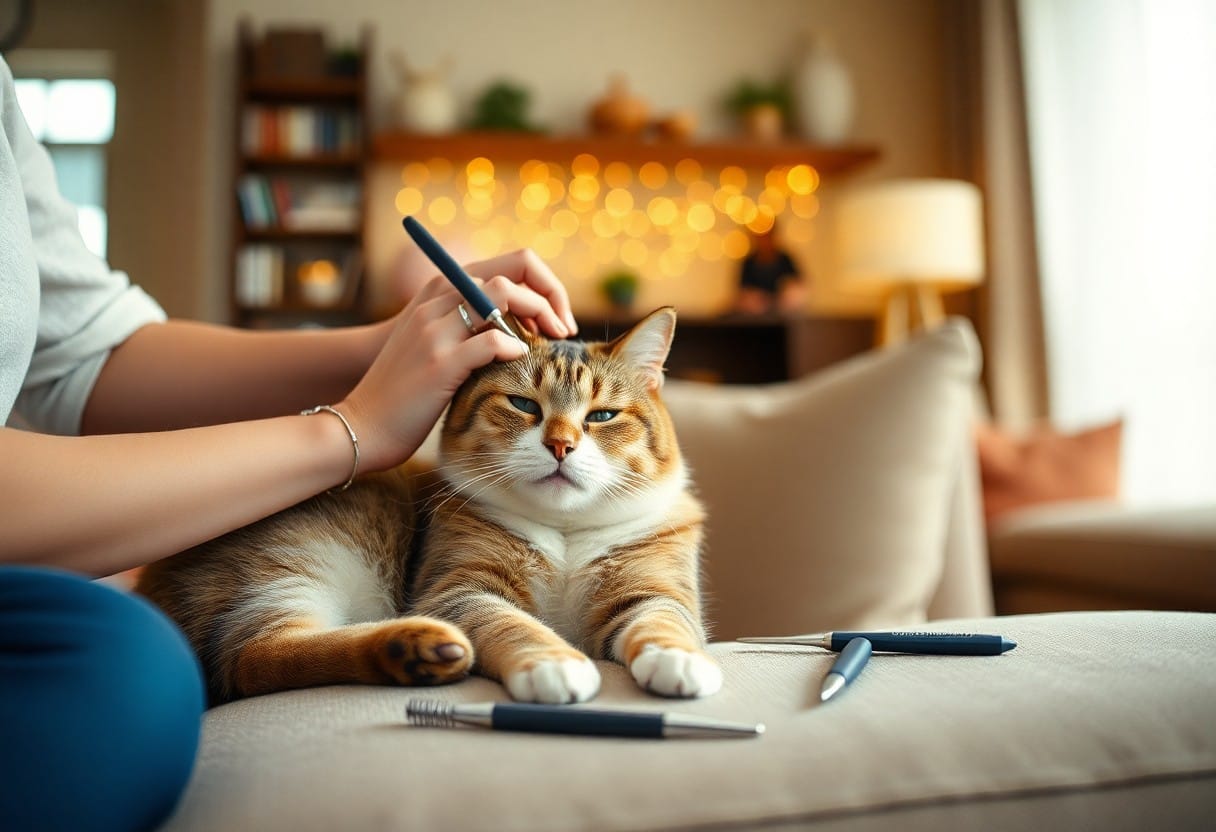
Incorporating Play into Grooming Sessions
Now, you can easily transform grooming into a fun activity by incorporating play. By using your cat’s natural instincts to explore and chase, you can create a positive association with grooming. Mixing playtime with the grooming routine not only makes it enjoyable for your cat but also strengthens your bond as you engage together in a shared experience.
Using Toys to Make Grooming Fun
At the start of grooming, introduce your cat’s favorite toy to help them destress. Whether it’s a feather wand or a laser pointer, using toys encourages your cat to remain calm and distracted while you groom them. This playful approach can turn a potentially daunting task into a delightful game, fostering cooperation and trust between you and your feline friend.
Rewarding Your Cat for Cooperation
After each successful grooming session, it’s imperative to reward your cat. Providing treats or verbal praise reinforces positive behavior, encouraging your cat to look forward to grooming time in the future. This practice not only makes the process more enjoyable but also strengthens the bond you share.
Considering how your cat initially reacts to grooming, using treats and verbal encouragement can significantly enhance their willingness to cooperate. This approach turns grooming into a rewarding experience, as cats thrive on positive reinforcement. Frequent rewards can help alleviate any anxiety, making grooming sessions smoother. Ultimately, fostering a positive grooming environment can help reduce stress for both you and your pet, ensuring a happier cat.
Building Trust Through Grooming
To foster a trusting relationship with your cat, grooming serves as an excellent opportunity to bond. By taking the time to groom your feline friend, you not only help them maintain their coat but also create a safe space for connection. Start with gentle strokes and short sessions, gradually increasing the time as your cat becomes more comfortable. This consistent approach will help your cat see grooming as a positive part of their routine.
Understanding Your Cat’s Body Language
Among the best ways to create a trusting environment is by learning to interpret your cat’s body language. Pay close attention to signs of stress or relaxation. For instance, a relaxed kitty will have a loose posture and may even purr, while a tense cat might flatten their ears or swish their tail. By responding to these cues appropriately, you can adjust your grooming techniques to ensure your cat feels secure.
Creating Positive Associations
Language plays an important role in making grooming a pleasurable experience for your cat. Use calming words and a soothing tone to help your cat feel at ease. Engage in short grooming sessions and follow up with treats or playtime to reinforce positive associations. This practice will not only enhance your bond but also condition your cat to look forward to grooming time.
Due to the natural instincts of cats, it’s important to associate grooming with positive experiences. Start by using high-quality brushes that are gentle on their skin, making sure to avoid any areas that may cause discomfort. After a grooming session, give your cat a favorite treat or engage in playtime, ensuring they connect grooming with rewarding outcomes. Over time, these positive associations will lead your cat to feel relaxed and even excited about grooming, strengthening your bond.
Problem Solving for Difficult Grooming Sessions
Not all grooming sessions go smoothly, and sometimes your feline friend may resist the process. It’s imperative to approach these difficult moments with patience and a plan, allowing you to identify triggers that cause stress or discomfort for your cat. By making small adjustments to your grooming routine, such as changing the time, tools, or environment, you can help create a more positive experience for both you and your pet.
Addressing Grooming Anxiety
Any signs of anxiety during grooming can be concerning for both you and your cat. It’s vital to recognize these signs, which may include hissing, twitching, or trying to escape. To help alleviate anxiety, start with short grooming sessions while giving plenty of praise and treats. Creating a calm environment and allowing your cat to explore the grooming tools can also help your pet feel more comfortable over time.
Seeking Professional Help if Needed
Addressing grooming challenges sometimes requires assistance. If you find that your cat’s anxiety levels are too high or they are becoming aggressive during grooming, consider consulting a professional groomer or veterinarian. Their expertise can provide alternatives and techniques tailored specifically to your cat’s needs. Additionally, they can help identify any underlying medical conditions that may be contributing to the discomfort. Indeed, professional help can be vital if you feel overwhelmed, as ensuring your cat’s grooming is safe and positive is the ultimate goal for you both.
Conclusion
Summing up, transforming grooming time into bonding time with your cat can significantly enhance your relationship. By using positive reinforcement, choosing the right grooming tools, and creating a calm atmosphere, you can make grooming enjoyable for both you and your feline friend. Incorporating play into these moments can further strengthen your bond and ensure your cat feels safe and loved. Embrace this quality time, and you’ll foster trust and affection in your unique companionship.
FAQ
Q: How can grooming help strengthen my bond with my cat?
A: Grooming is not just a maintenance routine; it’s an opportunity for you and your cat to spend quality time together. When you brush or comb your cat, it mimics the social grooming behavior that cats engage in with each other. This process can help create a sense of trust and safety between you and your pet, leading to a strong emotional connection. Make sure to use gentle techniques, and offer treats and affection during the process to further enhance the bonding experience.
Q: What tools should I use for grooming my cat at home?
A: Selecting the right grooming tools will depend on your cat’s coat type. For short-haired cats, a soft bristle brush or rubber grooming mitt can be effective in removing loose hair and distributing natural oils. For long-haired breeds, a slicker brush or wide-toothed comb is ideal for preventing mats and tangles. Always prioritize your cat’s comfort by ensuring that the tools you choose are suitable for their fur type and sensitivities. This will make grooming sessions more enjoyable for both of you.
Q: How can I make grooming a fun and engaging experience for my cat?
A: To create a positive grooming experience, start by establishing a calm environment free from distractions. Choose a quiet place where your cat feels safe. Introduce grooming gradually by allowing them to sniff the tools and providing lots of praise and treats. Keep the sessions short initially, and gradually increase the time as your cat becomes more comfortable. Providing interactive toys or treats during breaks can also keep the experience light-hearted and enjoyable!
